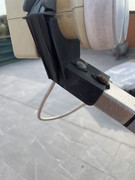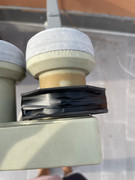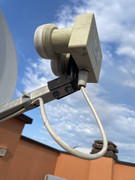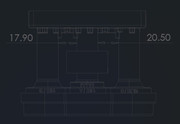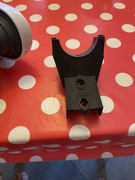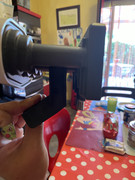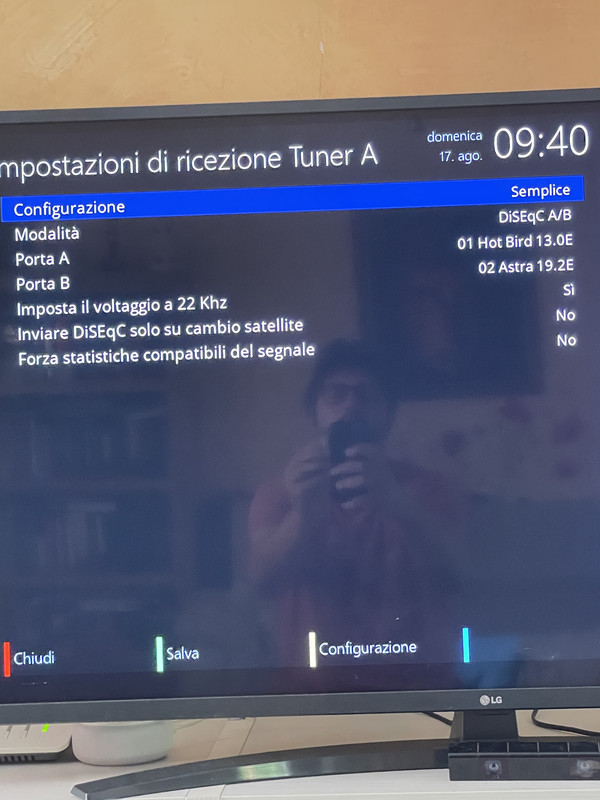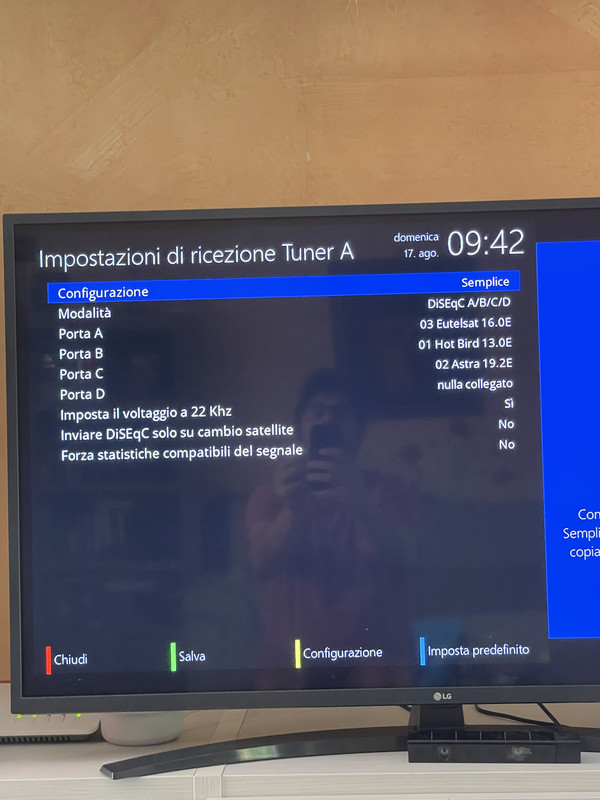@brigante08:
Quando temi di “perdere” la ricezione:
Puoi misurare l'elevazione frontale della parabola con una tavola di legno e un inclinometro (o un telefono con un'app inclinometro). In questo modo potrai sempre ritrovare l'elevazione necessaria per 13E. Inoltre, da quella misurazione potrai ricavare l'elevazione frontale necessaria per 16E.
Di solito utilizzo un morsetto sul palo, direttamente sotto il supporto della parabola, per evitare che il supporto scivoli lungo il palo mentre effettuo le regolazioni di precisione. Se non hai un morsetto, a volte utilizzo diverse fascette (ty-raps) intorno al palo. Non sono efficaci come un morsetto, ma sono comunque utilizzabili.
Puoi segnare l'azimut attuale con alcuni segni sul palo e sul supporto, per ritrovare il 13E se necessario.
Il 16E si trova 4,2 gradi a sinistra, quindi puoi calcolare a quanti millimetri corrispondono questi 4,2 gradi sulla circonferenza del tuo palo.
Per la puntatura dell'azimut, anche dishpointer.com è molto pratico. Puoi cercare dei punti di riferimento verso cui puntare.
Probabilmente “preparerei” l'elevazione della parabola con il vostro attuale LNB, abbassando leggermente l'elevazione della parabola fino al punto in cui 13E è appena ricevibile. Con un po' di fortuna, quando montate il triplo LNB, l'elevazione sarà già scesa abbastanza da consentire al triplo LNB di ricevere un po' di segnale, mentre spostate la parabola verso sinistra (vista da dietro la parabola).
In questo caso, dopo di che viene la messa a punto. (A proposito, solo la qualità del segnale è importante!)
Se tutto questo non funziona, puoi sempre usare il sole per trovare l'azimut necessario per 16E. In combinazione con il calcolo dell'elevazione frontale della parabola per 16E, questo dovrebbe essere sufficiente per trovare la posizione 16E.
Spero che questi suggerimenti (brevi descrizioni) ti siano utili.
Tradotto da:
@brigante08:
When you are afraid of "loosing" reception:
You can measure the dish front elevation with a wooden plank and an inclinometer (or a phone with inclinometer app). That way you can always find back the needed elevation for 13E. Also you can derive the needed dish front elevation of 16E from that measurement.
I usually use a clamp on the mast, directly under the dish mount, to prevent the dish mount sliding down the mast while doing fineadjustments. When you don't have a clamp, I sometimes use several ty-raps around the mast. Not as good as a clamp, but still usable.
You can mark the present azimuth with some markings on the mast and the mount, to find back 13E if needed.
16E is 4.2 degrees to the left, so you could calculate with how many millimeters these 4.2 degrees correspond on the circumference of your mast.
For the azimuth aiming, also dishpointer.com is very practical. You can look for landmarks where to aim at.
I would probably "prepare" the dish elevation with your present LNB, by lowering the dish elevation somewhat to where 13E is only JUST receivable. With a bit of luck, when you mount the triple LNB, the elevation has already sunk enough for the triple LNB, to receive some signal; while you are moving the dish to the left (seen from behind the dish).
When this is the case, after that comes the finetuning. (By the way, only the signal quality is important!)
If all this doesn't work, you can always use the sun to find the needed azimuth for 16E. Combined with the dish front elevation calculation for 16E, this would be enough to find the 16E position.
I hope these tips (short descriptions) are helpfull.
Ciao,
A33

